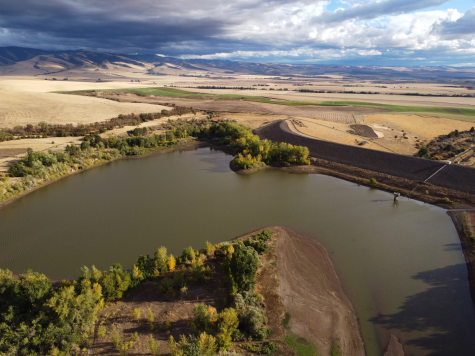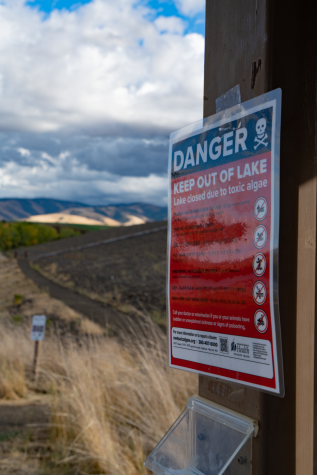Bennington Lake closed following discovery of dangerous bacterial bloom
October 7, 2021

Cyanobacteria was recently discovered in one of the area’s most popular natural sites, Bennington Lake. On Thursday, Sep. 23, the Walla Walla County Department of Health was notified by the Department of Ecology of blue-green algae detection in the lake.
While this toxic bloom is referred to as an “algae,” it is actually a cyanobacterium that has similar qualities to algae and other plants.
Biology professor Heidi Dobson described the dangers a bacterial bloom can pose.
“Many cyanobacteria produce toxins when their populations get large and dense,” Dobson said in an email to The Wire. “Some produce extremely strong toxins, including neurotoxins. It all depends on the species.”

It is unclear what specific species of bacteria has been found in Bennington Lake.
A news release from the Walla Walla District Corps of Engineers reported that cyanobacteria can be harmful to people and fatal to animals. According to the Washington State Department of Health, blue-green algae can produce nerve and liver toxin poisoning.
Cyanobacteria can be found in regions that have experienced warm temperatures or lots of sunlight. Walla Walla experienced record-high temperatures, reaching 115 degrees at its peak, throughout the summer and high fall temperatures that can account for the bloom.
Many other regions in Washington have discovered blue-green algae due to high temperatures. Six dogs were recently sick or died after being on the Columbia River and exposed to dangerous blooms.
All water access to Bennington Lake is closed, and visitors are encouraged to keep children and pets from touching the water until further testing demonstrates toxins have been reduced to safe levels. Hiking trails and recreational spaces around the lake remain open to visitors.





